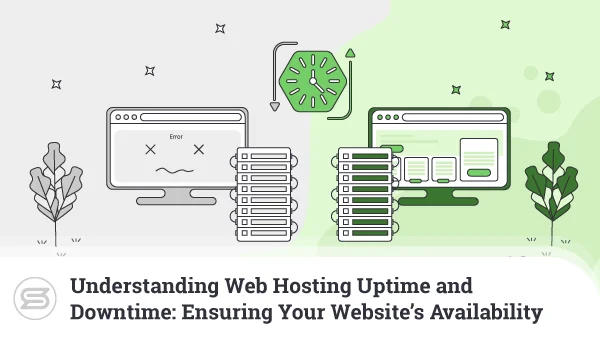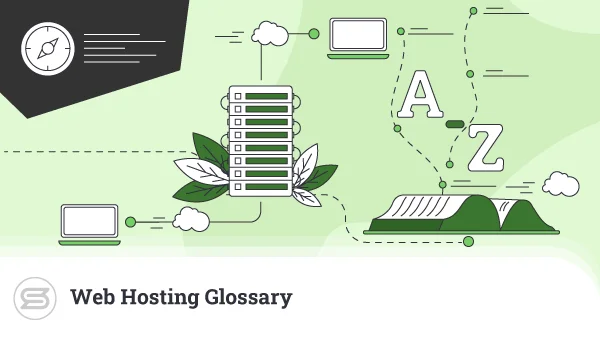Demystifying Web Hosting Costs: What to Expect and How to Budget
To create the best website for your needs, you should choose the right hosting vendor and plan. After all, that’s the foundation of your whole online presence. However, this can appear confusing at first – there are so many packages to choose from and the prices vary depending on the provider. Not to mention the variety of industry terms like VPS, managed and unmanaged, migration, and more.
So, today we embark on a journey through the hosting world with one end goal in mind – demystifying web hosting costs and teaching you what to expect and how to budget.


Introduction to Web Hosting Costs
Web hosting costs can vary significantly from one provider to another, as they encompass a range of components.
Those include:
- hosting type – shared, VPS, dedicated, cloud
- server resources – bandwidth, storage space, CPU, RAM, etc.
- subscription model – monthly, annual, biannual, etc.
There are additional costs for extra services as well, such as migration fees, SSL certificates, premium support, and more.
Keep in mind that some hosting providers will offer the above extras at no additional fees, which is great as they are often vital for our website, regardless of its purpose.
Let’s dissect:
Types of Web Hosting Plans
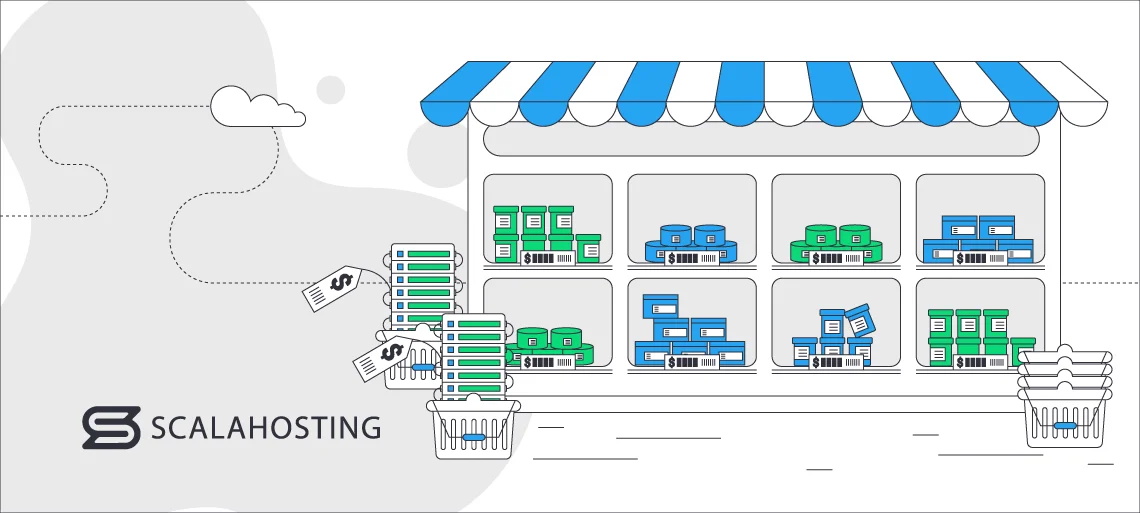
First, we’ll tackle the types of web hosting plans.
Newbies or smaller businesses usually start with shared hosting. It’s the cheapest option available, with prices ranging between $1 and $15. In such an environment, multiple users share the same server and its resources. This has an obvious downside – one website can easily take up more of the storage, CPU, RAM, etc. and leave the others hanging. Also, if a certain account is spreading spam or falls victim to a hacker attack, the rest will suffer too. As a starting point, however, a shared package is the best option.
For established and growing businesses, vendors recommend VPS hosting plans. The price difference between them and the shared one isn’t all that striking. A VPS package usually costs between $15 and $80 dollars. It again provides the same server to several users, but here, your account will be completely isolated and you’ll have dedicated CPU and RAM. VPS plans also allow for more scalability – server resources can be added or removed on the go, depending on your needs.
And last but not least – dedicated servers. Price-wise, this is the most expensive option, with plans ranging from $80 to $100-200+. You get a predetermined set of resources and are also in charge of the server, of which you’re the only user. This is the best option for enterprises and big ecommerce websites.
Initial Setup and Migration Fees
The initial setup and migration fees are more often than not included in your web hosting price.
The initial configuration includes creating your hosting account, connecting it with a domain name, installing the operating system, etc. If you already have a website hosted by another vendor and want to move it – your new provider can do the migration for you. The cost will depend on the company you’ve chosen. With ScalaHosting, for example, you get expert-managed migration for free, when you get one of our plans. You can move as many websites as needed, without any additional fees.
Subscription Pricing Models
The overall hosting cost will also depend on whether you choose a one-time, monthly, or annual subscription.
Most hosting vendors offer some sort of discount if you choose the annual option. This can range anywhere between 5% and 40% and can save you quite a bit of money for starters.
In case committing for a year sounds too intimidating, you can also go for a monthly subscription. The model here is self-explanatory – you pay a fee every month and continue to use the vendor’s services. This option allows for more flexibility, as you can easily change your plan if needed.
Some hosting providers offer extended subscription options, such as two, three, or five-year plans. Others offer a one-time payment and you’re set for life. While that seems like a good idea, make sure you can easily upgrade as that might trap you with a package that you’ll outgrow. Also, when researching such offers, always keep an eye out for hidden fees.
Additional Services and Add-ons
Reputable vendors will include the primary domain registration and renewal as part of their packages, so it won’t come as an additional fee. Usually, the cost for a domain name is between $10 to $20 a year. Renewal prices run a bit higher, ranging between $10 and $60. The price depends on numerous factors like:
- top-level domains (TLDs) – think .com, .uk, .gov
- duration – how long you intend to use the domain for
- transfer – there’s a fee if you’re transferring your domain name
Then there are the safety features, such as SSL certificates and security add-ons. Usually, a secure sockets layer (SSL) certificate from a private vendor is around $60/annually. This protocol encrypts the data, transmitted to the web and it’s vital for the security of your website. It’s the main difference between HTTPS and HTTP.
As a website admin, you might need to install some additional security plugins. MalCare Security, SecuPress, and Defender Security are some of the more popular examples. While some come with a free version, the premium plans are recommended.
With ScalaHosting, you get a free SSL certificate and access to the SShield Security Guard, which blocks 99.998% of web attacks without any additional fees.
Bandwidth and Data Transfer Costs
Let’s first discuss the difference between the two:
Bandwidth is the amount of data that can be transferred simultaneously. Data transfer is the actual amount that is being passed on.
Less bandwidth means a slower site and fewer data transfer means it might often be unavailable to users. How much is enough for your website will depend on its size and the number of viewers. The easiest way to calculate is the monthly number of visitors, the overall pageviews, and the average size of your pages.
Most vendors offer unmetered bandwidth, meaning you can go over the cap set in your plan. However, if you exceed that limit, you’ll often have to pay an additional fee.
Storage Allocation and Scalability
Storage allocation, simply put, means how much physical disk space you’ll need to store your data. Your website requirements will depend on the size of your files, databases, and media assets. Sites with extensive image galleries, videos, or downloadable content typically need more space than the average static page.
This is not something set in stone, however.
As your content and user base grow, you will most likely need to upgrade to a hosting plan with more storage capacity. A reputable vendor will offer packages with flexible resources. In such cases, you’ll be free to request more disk space to fit your needs. Such plans will allow you to pay for what you use, without overcharging for things you’re not actually using.
Ecommerce Features and Security Costs
If your website has a shop or is entirely focused on selling goods and services, then that’s a whole new story.
The first thing to consider is the site-building software. There is an abundance of ecommerce platforms and apps for that purpose – Shopify, WooCommece, Magento, ShipStation, OpenCart, to name a few. Some of them are self-hosted (WooCommerce, Magento) and others combine the app plus web hosting (Shopify, BigCommerce).
A vital part of any ecommerce shop is the payment processing tool. It’s vital to consider that all popular solutions here, PayPal, Stripe, Square, all have fees per transaction, for example, $0.30 for any transaction over $10. The regions of interest, currencies, and payment methods also play a role in price forming. And, of course, there are bank fees.
Ecommerce websites operate with huge amounts of sensitive data, so you’ll need to have a minimum of:
- an SSL certificate (around $60/annually, but there are free options)
- a two-factor authentication app (prices range from $0 to 70$)
- PCI compliance (around $300/year for small sites and $70,000+ for a large enterprise)
Given the type of data you’ll be handling, the more you invest in the security of your store, the better.
Support Levels and Technical Assistance
A good tech support team is the backbone of a reliable hosting vendor. They assist you with things like:
- website migration
- security issues
- app installation
- backups
- server problems
Premium hosting providers give you much more security here, compared to the free ones.
In that respect, ScalaHosting offers 24/7 support with various ways to contact the team – live chat and ticket being the most popular ones. You can expect immediate connection through the chat and a 15-minute response time through the internal ticketing system.
Renewal Costs and Price Increases
First thing first – you might have noticed that new customers get amazing discounts to get on board with practically any reputable host. But when renewal comes – many are frustrated to see that prices often go up.
At this point, you might be logically thinking – why don’t I just jump ship and find another provider with a great initial discount?
While this can definitely save you some money in the short term, the risks should not be underestimated – botched site migrations, slower performance, sub-par support, just to name a few. Remember, finding the right hosting provider to match your needs takes some trial and error, so if you’ve already found a great partner – why move away to just save a few dollars?
The slightly higher renewal prices are actually to be expected.
When you take into account the entire package with all features and services – that’s often way more than what you’re paying. As thousands of hosts are fighting for the same pool of clients, the companies lower their introductory prices to the bare minimum, so anyone can give website building a try. But come renewal, prices should adjust to the market, after all, you don’t want your provider to just go bankrupt and leave your site hanging.
Working on a tight budget is quite common, though, especially if you’re just starting out. That’s why our advice is to always check with your host if your renewal prices seem way too high. Further discounts and plan adjustments are sometimes possible and staying with a reliable vendor always beats hopping around and moving your website to the next cheap offer.
Calculating Total Cost of Ownership (TCO)
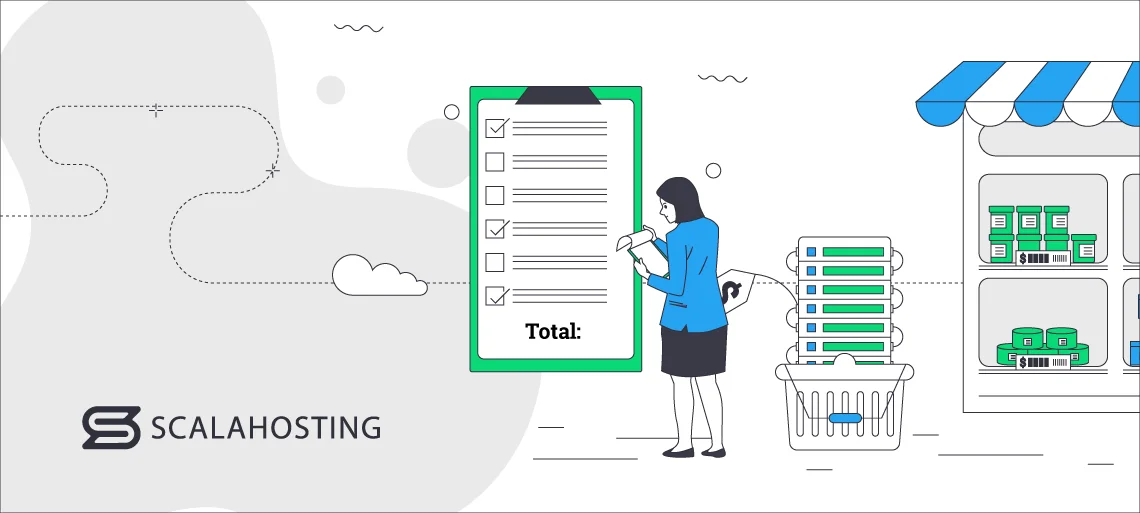
Let’s sum up which factors affect the price-forming process:
- initial setup
- migration costs
- system resources, such as CPU and RAM
- additional services, such as a domain name
- bandwidth and data transfer
- security features, such as an SSL certificate
- storage
- scalability options
- ecommerce features, such as payment gateways
- level of tech assistance
Evaluate how hosting expenses fit into your website budget. By understanding the TCO, you can make informed decisions and allocate resources accordingly.
Free vs. Paid Hosting
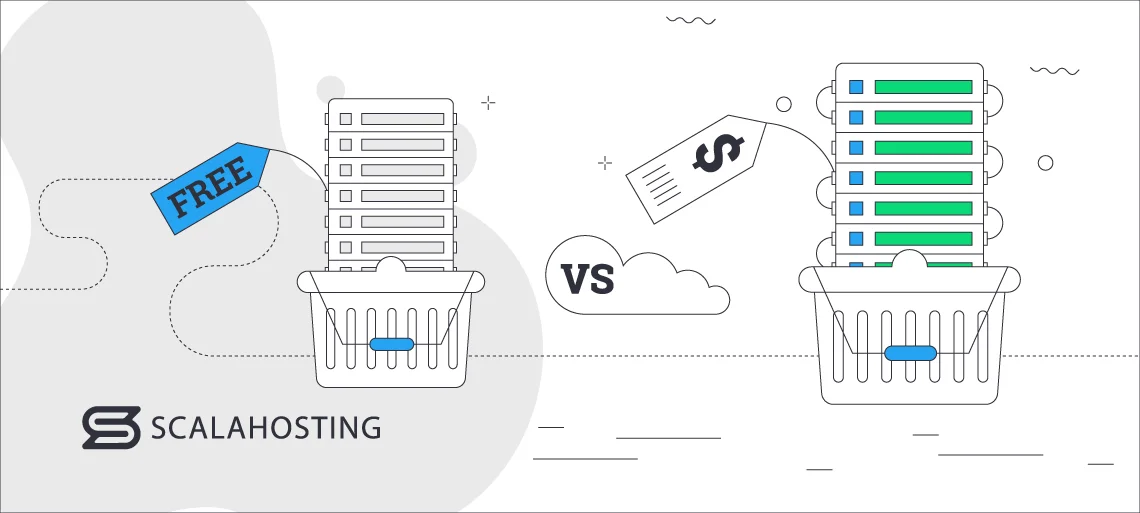
Okay, so, if there’s free hosting, then you don’t really need to get a paid plan, right?
Wrong.
Unless your only goal is to have a personal blog to share with just a few friends, you’ll be a thousand times better with a premium package.
To start you off, there are the annoying ads. Free hosting providers will often bombard your website with ads (mostly not relevant to your services), that’s how they manage to keep their business afloat. This will not only turn off your visitors, but will soon result in search engine penalties as well.
Then there is your domain name. Launching your business on a premium host, you will often get a free domain as a complementary service. You are the sole owner of the name and can operate with it as you wish even if you discontinue your hosting service in the future. In comparison, free hosts will only give you a subdomain that you don’t practically own. So, instead of MyBusiness.com, you will get something like MyBusiness.freehost.com.
Doesn’t look very professional, does it?
Speaking of that, don’t expect much of a site performance from a free hosting vendor. On top of the extremely low resource allocation, you will soon find there are many additional limits imposed on your usage. That’s because such hosts cram hundreds of people on a single server to minimize service costs.
Want constant uptime? While the popular paid hosting providers are fighting to optimize their numbers very close to 100%, frequent downtimes are to be expected with free vendors. There are companies that even intentionally stop their servers for a while on a weekly basis.
You might be wondering – can’t I just contact someone from support to help me out if things go wrong?
Sure, 24/7 technical assistance is a given with most paid hosts, often through multiple channels – live chat, phone, ticketing, email, social media. But you can’t really expect much from a free host. Such companies are often one-man operations and costs for training and paying actual people to help you are way off their budget.
All in all, while you might be swayed by the idea of paying nothing for web hosting, you should remember that you get what you pay for and that’s exactly the case here.
Comparing Hosting Providers
Now, let’s see what some of the most popular hosting vendors offer in their plans and what you’ll eventually have to pay additionally for:
| ScalaHosting | GoDaddy | Hostinger | Bluehost | SiteGround | |
|---|---|---|---|---|---|
| Shared hosting | Starting at $2.95/month | Starting at £2.44/month |
Starting at $9.99/month | Starting at $11.99/month | Starting at 2.99 €/month |
| VPS hosting | Starting at $29.95 /month | Starting at £8.99/mo |
Starting at $13.99/month | Starting at $79.99/month | Starting at 80.00 €/month |
| Dedicated Server | Custom pricing | Starting at £129.99/mo |
X | Starting at $179.99/month | X |
| Setup & migration | ✓ | ✓ | ✓ | ✓ | ✓ |
| Automated backups | ✓ | ✓ | Web Single or Premium plan users need to purchase them; those with Business Web Hosting or above get them for free | Free for the first year on some plans | ✓ |
| Unmetered bandwidth | ✓ | ✓ | ✓ | ✓ | ✓ |
| Security | SSL certificate, advanced security tool SShield for free in all plans | Free SSL in all paid plans; additional Website Security plans | Free SSL, DDoS protection, firewall, malware scanner | Free SSL (only for a year on some plans), domain privacy (free for a year), malware scanning | Free SSL, custom WAF, AI anti-bot |
| Tech support | 24/7, live chat and ticket | 24/7, phone and live chat | 24/7, live chat | 24/7, live chat and phone | 24/7, live chat, tickets, phone |
Budgeting Tips for Web Hosting
Creating a realistic financial plan based on your website’s needs and growth plans is tricky, but not impossible. A good starting point would be understanding the different types of hosting and what each brings to the table. Then you should compare the available vendors and the packages they’re offering in order to create a potential budget. A good idea would be to allocate some of it towards potential add-ons and growth.
Another thing you can do is optimize your site performance. Some ways to reduce resource usage include reviewing the code, enabling caching, and decreasing image size.
Monitoring and adjusting your resources according to actual usage can also save you some money. Еxceeding limits can lead to fees. In another scenario, you might find yourself paying for resources you’re not actually using. Choosing a flexible hosting plan can save you from both.
And last but not least – commit to a longer subscription period. Usually, that will lower your hosting costs quite significantly. Staying informed about your hosting provider’s pricing updates is also crucial in order to avoid surprises.


Wrap Up
Whether you’re launching a new project or looking to optimize your existing one, a well-planned budget is the key to a successful online presence. By understanding the various components of hosting expenses and assessing your website needs, you will be able to allocate funds effectively.
FAQ
Q: How are hosting costs calculated?
A: First, you need to consider the type of hosting you’re choosing. Shared is the cheapest, followed by VPS, and dedicated is the most expensive. The hosting costs include the allocated resources, such as bandwidth and storage; initial setup and migration; additional services, for example, domain name; security features, like SSL; and level of tech assistance. Any other features, such as ecommerce tools, are also included in the price-forming process.
Q: How can I reduce my hosting costs?
A: The first step to reducing your hosting costs is researching the market. Choose a suitable hosting type and a reputable vendor. A package that allows you to add and remove resources as necessary can save you a lot of headaches down the road. Committing to a longer subscription will more often than not get you a bigger discount.
Q: Can I keep my domain but change host?
A: Yes, you can keep your domain name when changing hosts. You’ll have to check your contact information, unlock your domain, initiate and authorize the transfer on your new hosting account. You can also contact the support team of your new vendor in advance to ask them for assistance.


